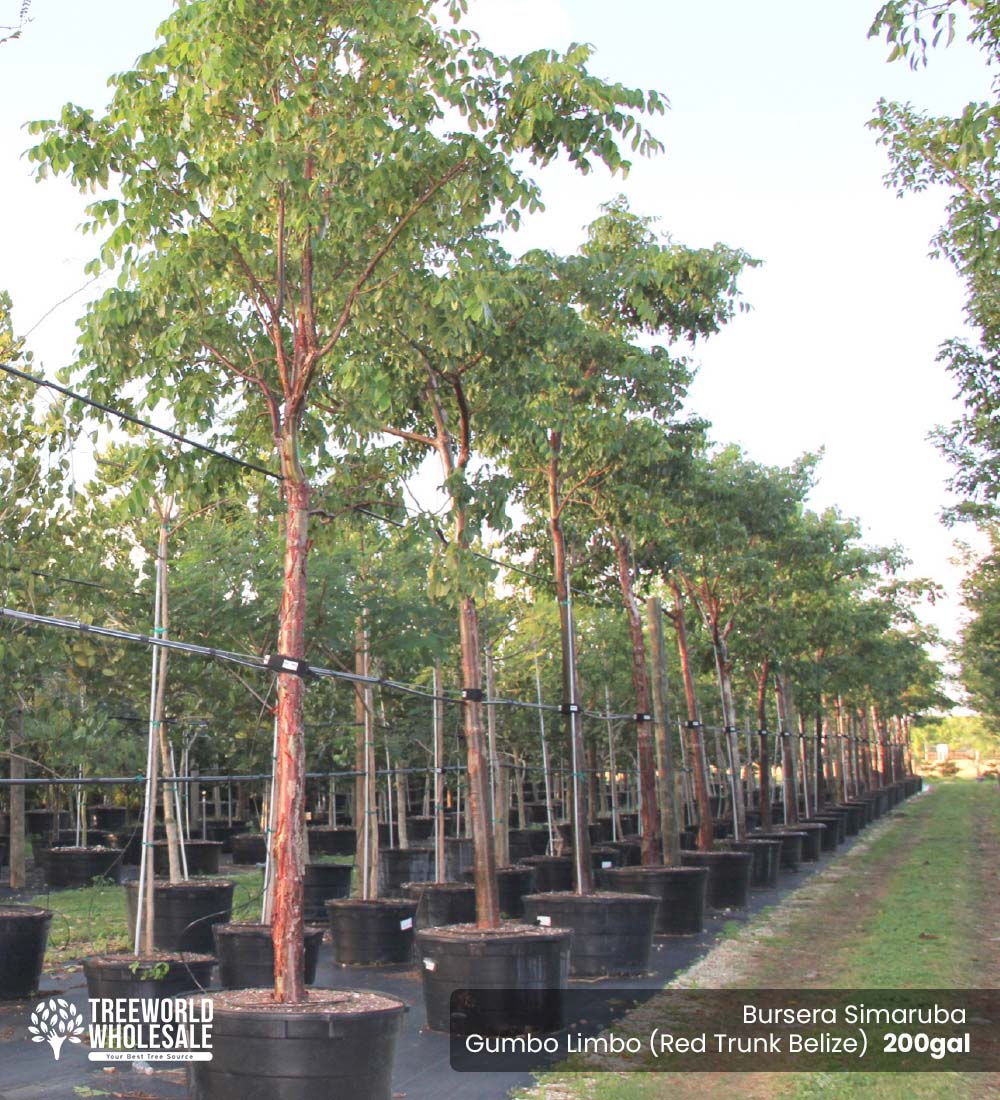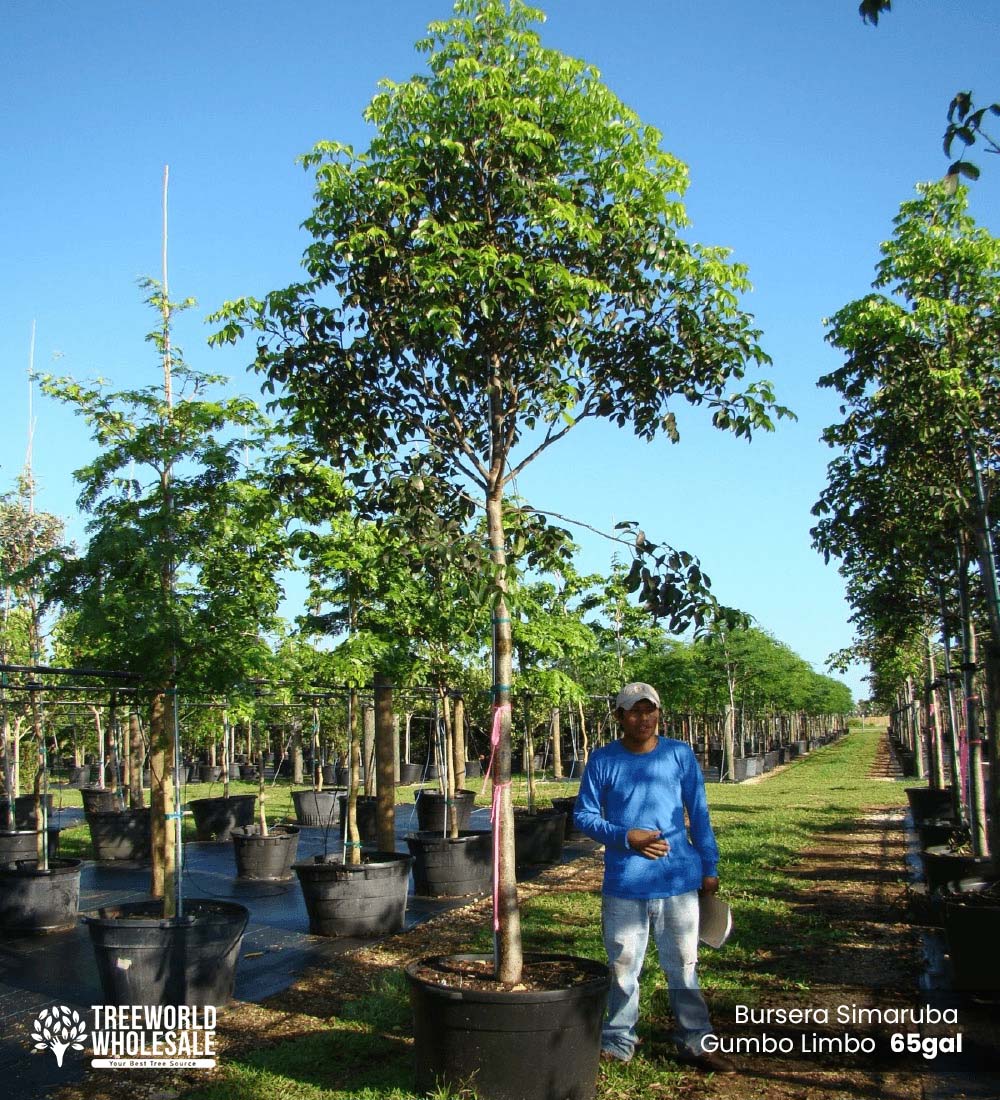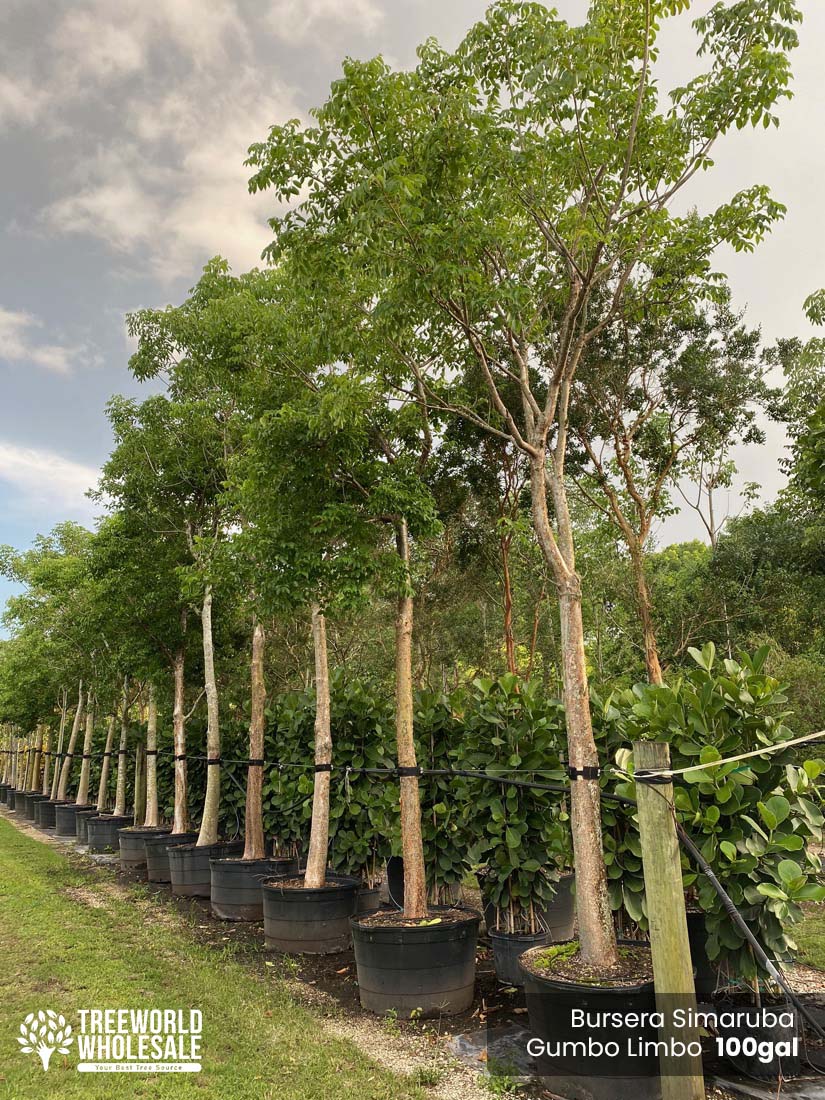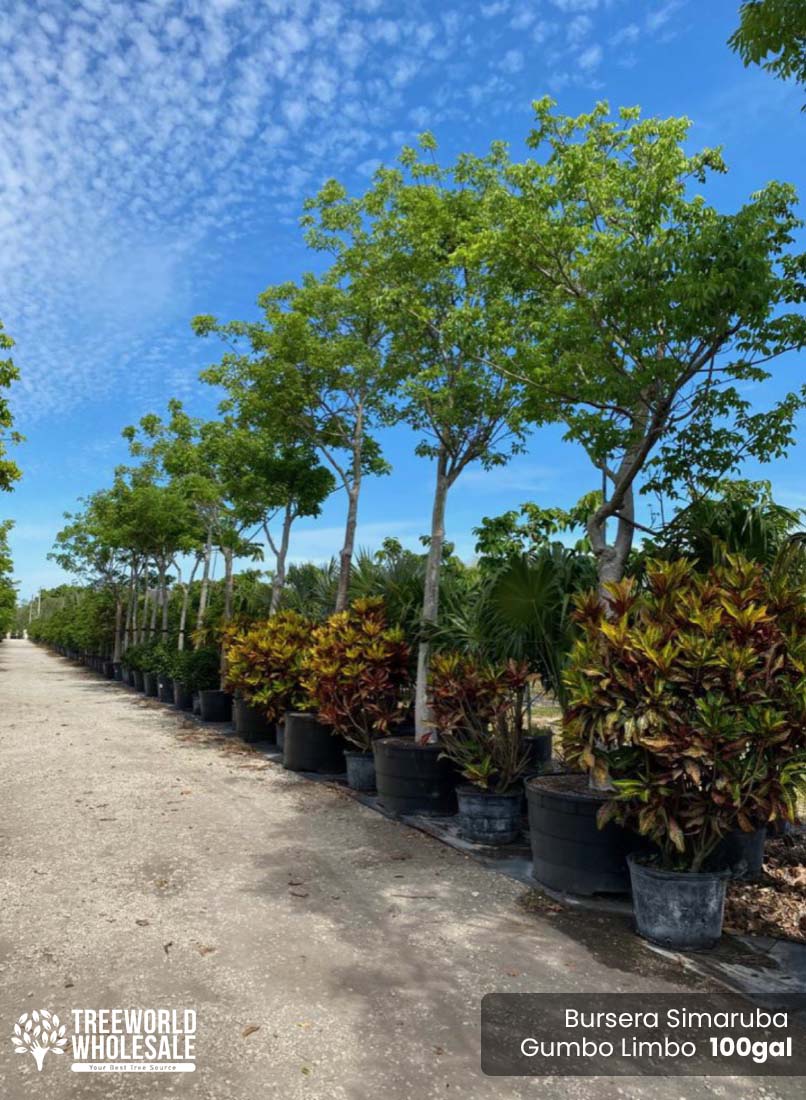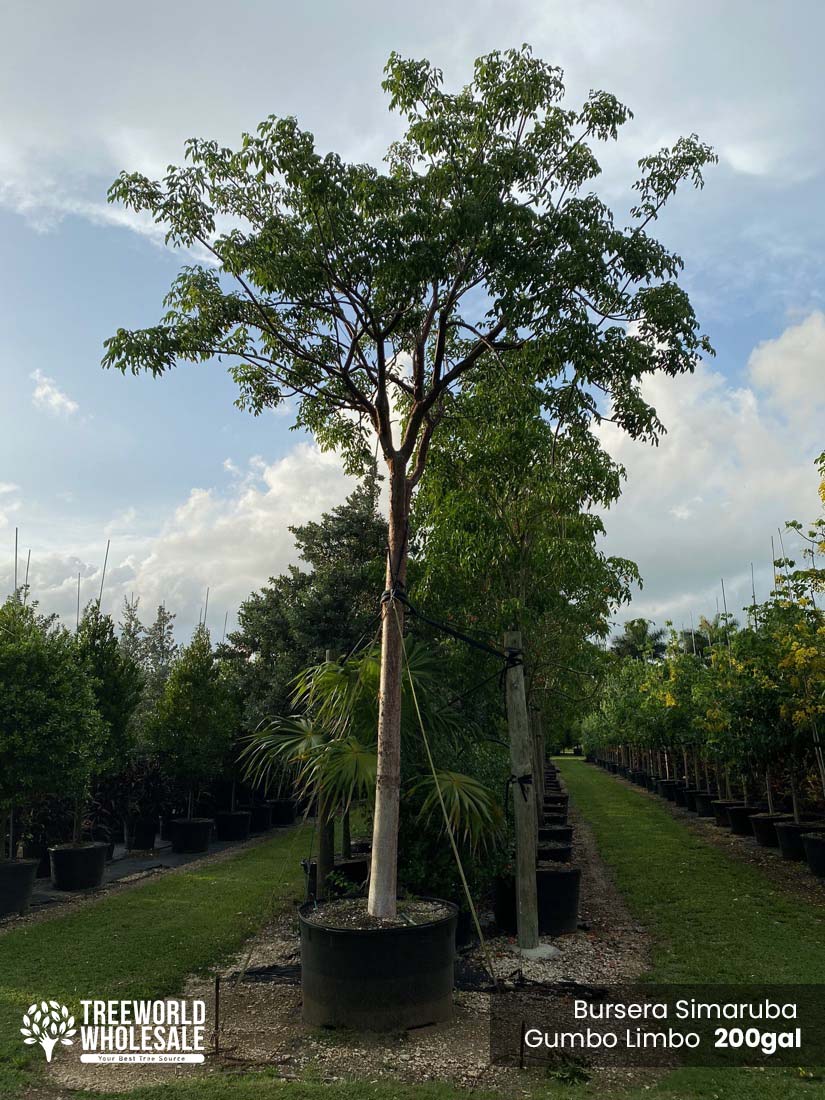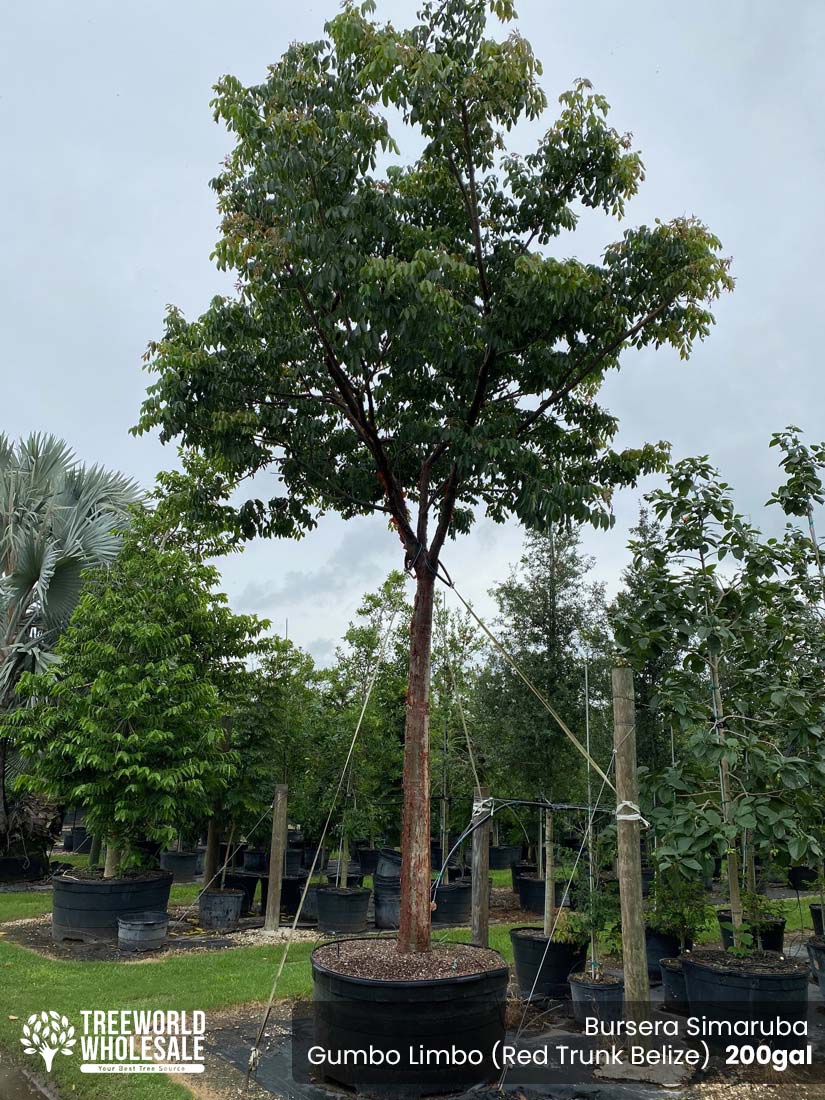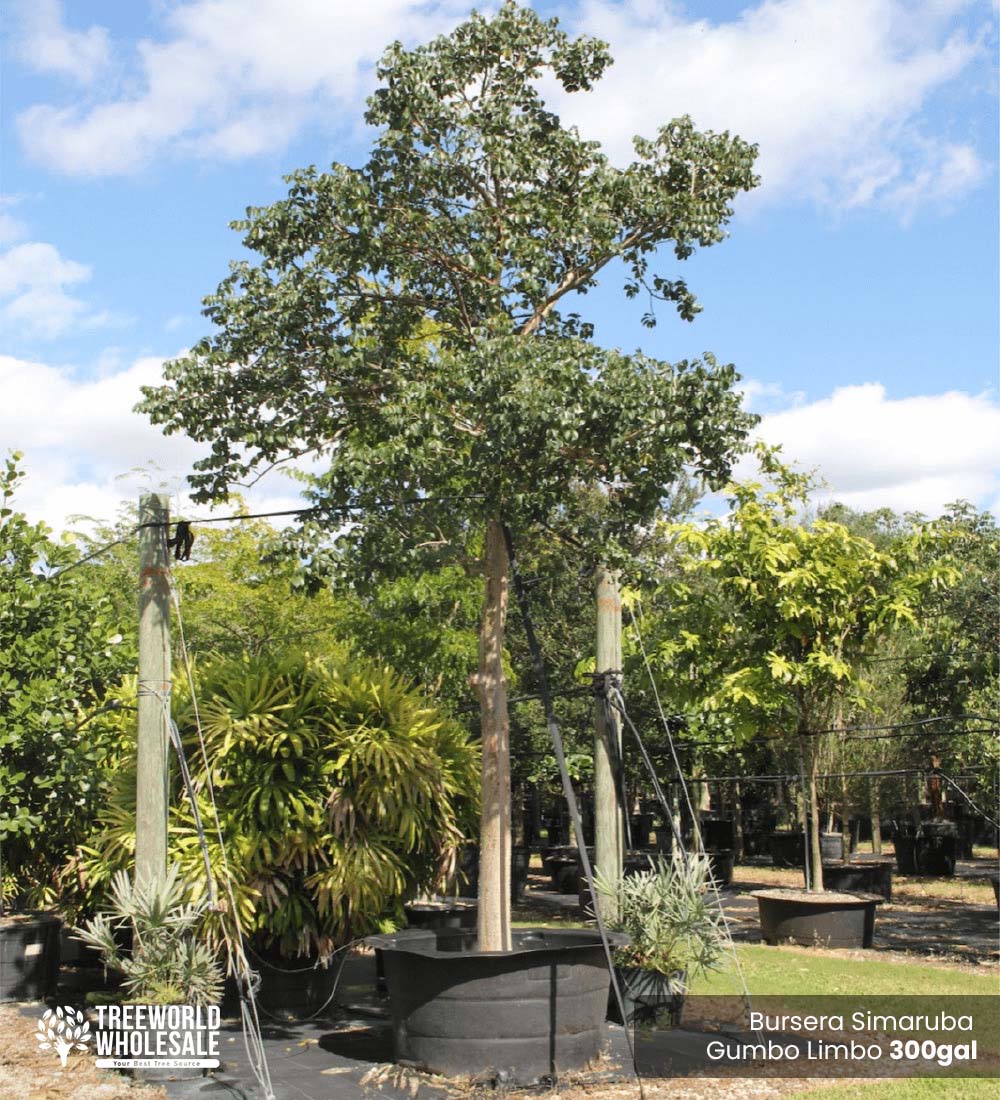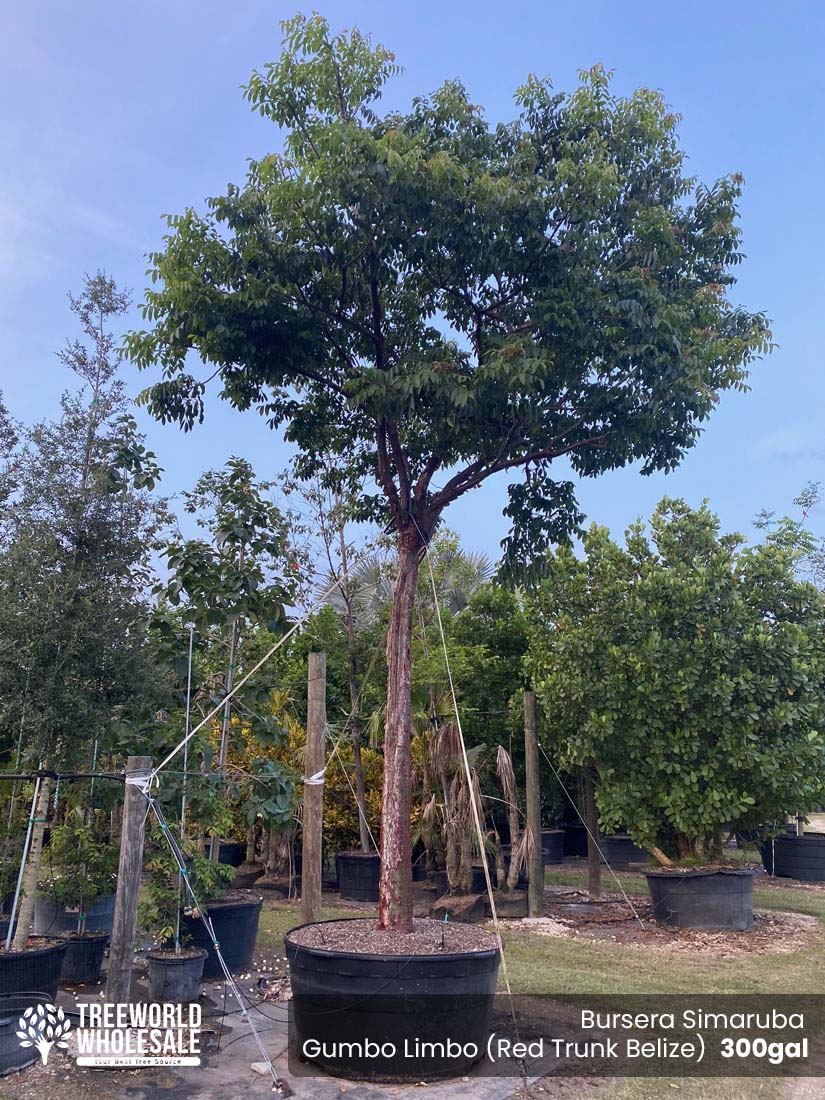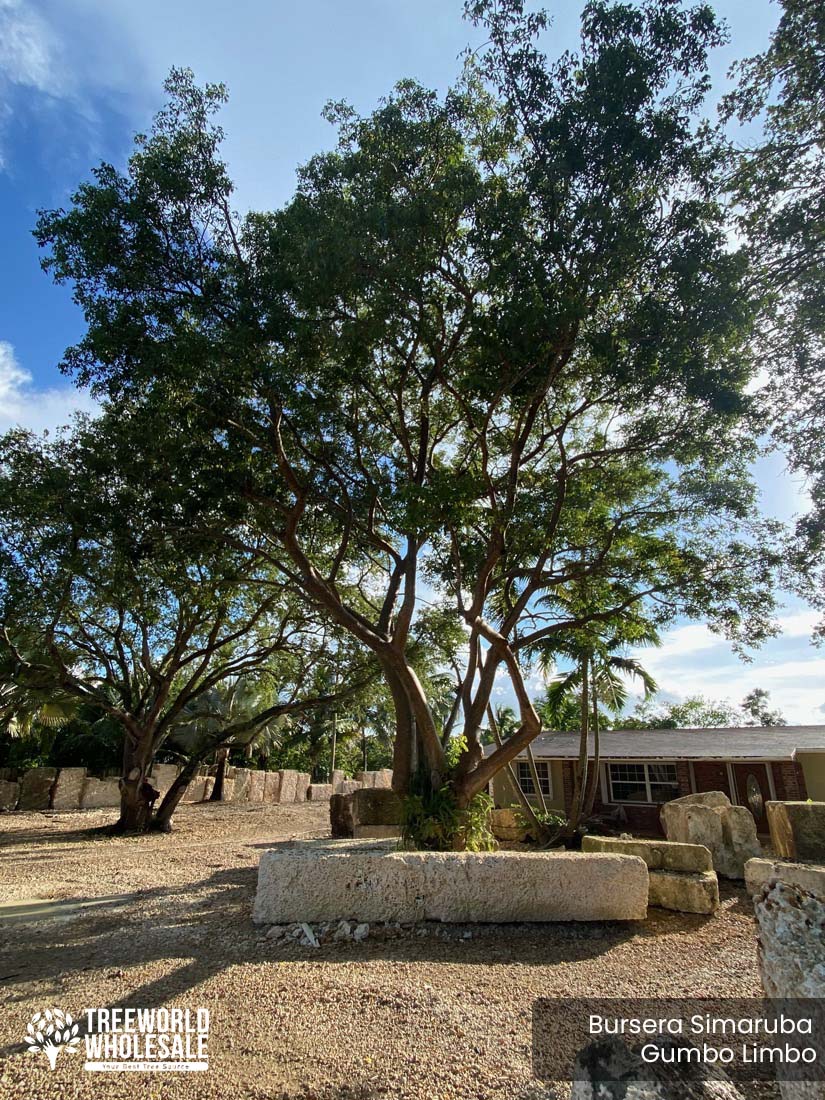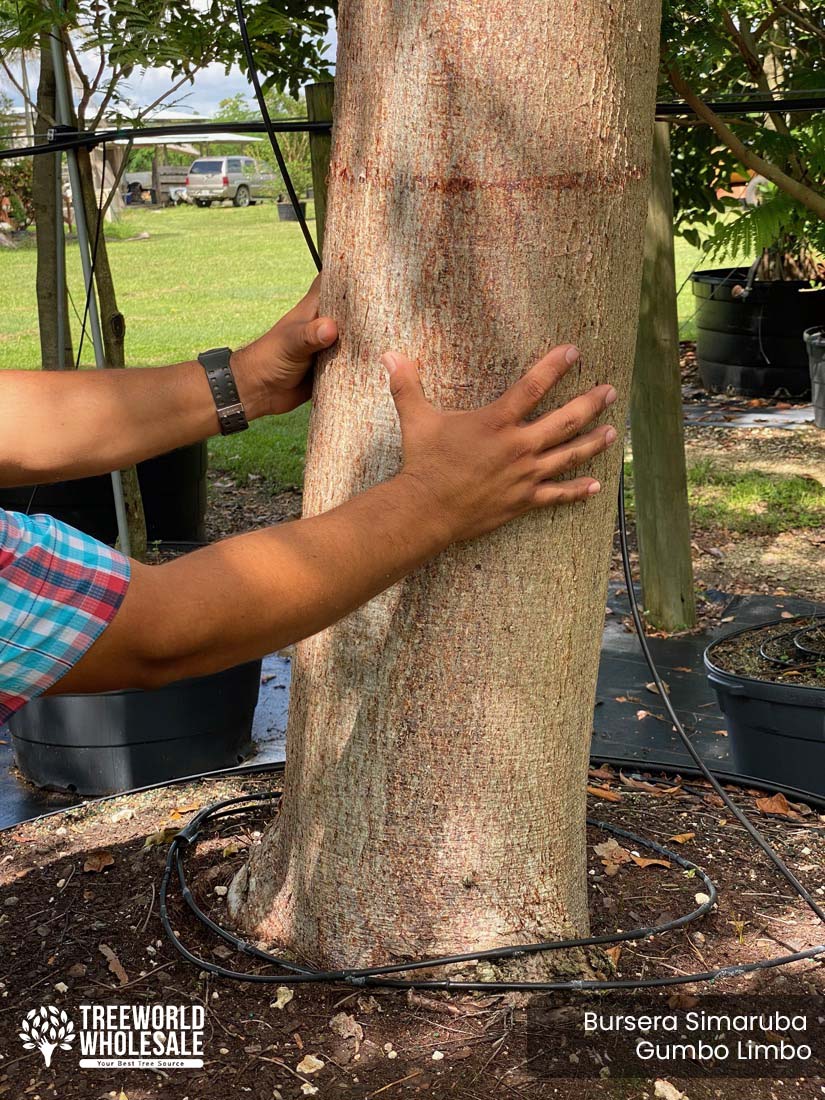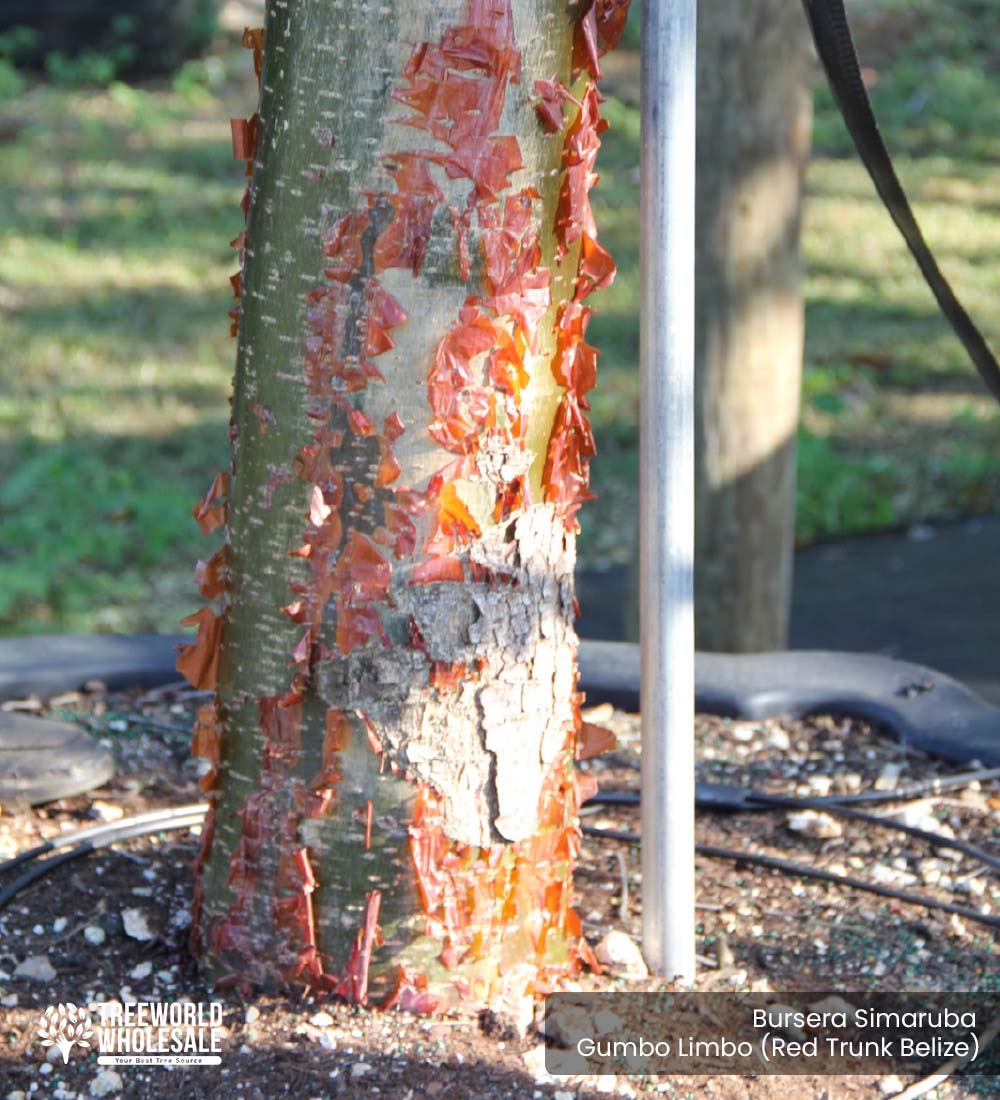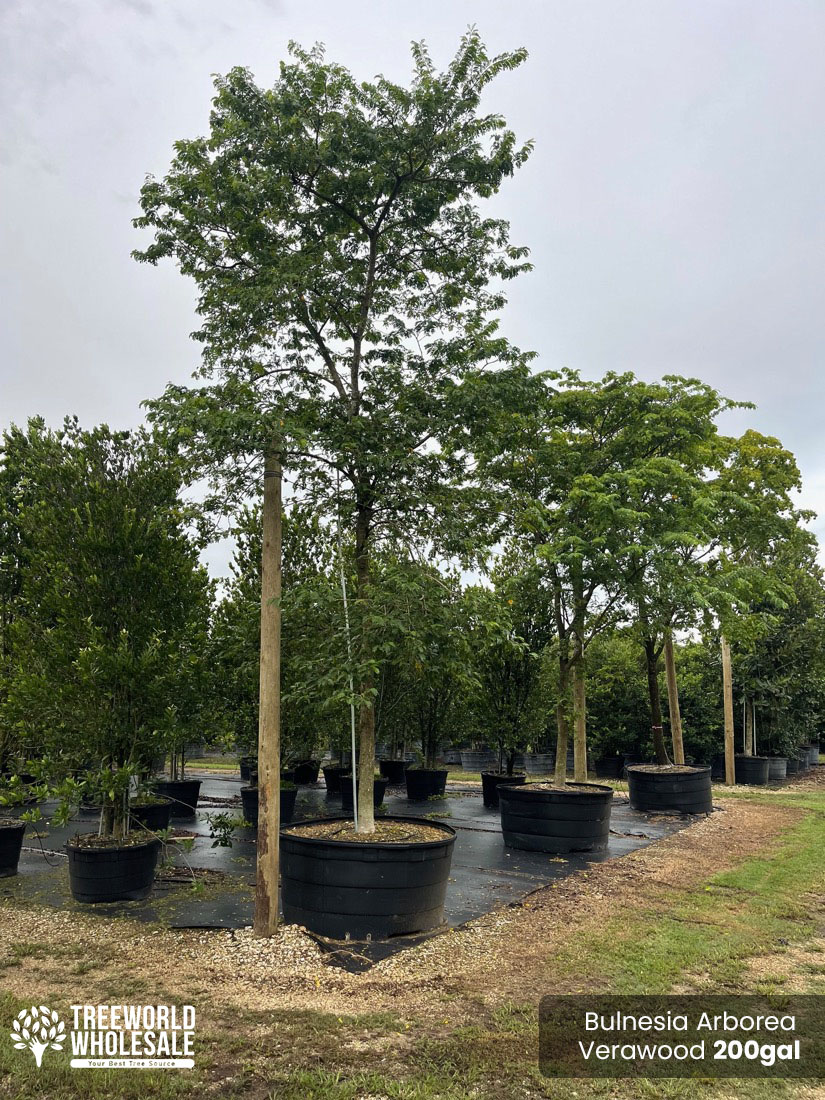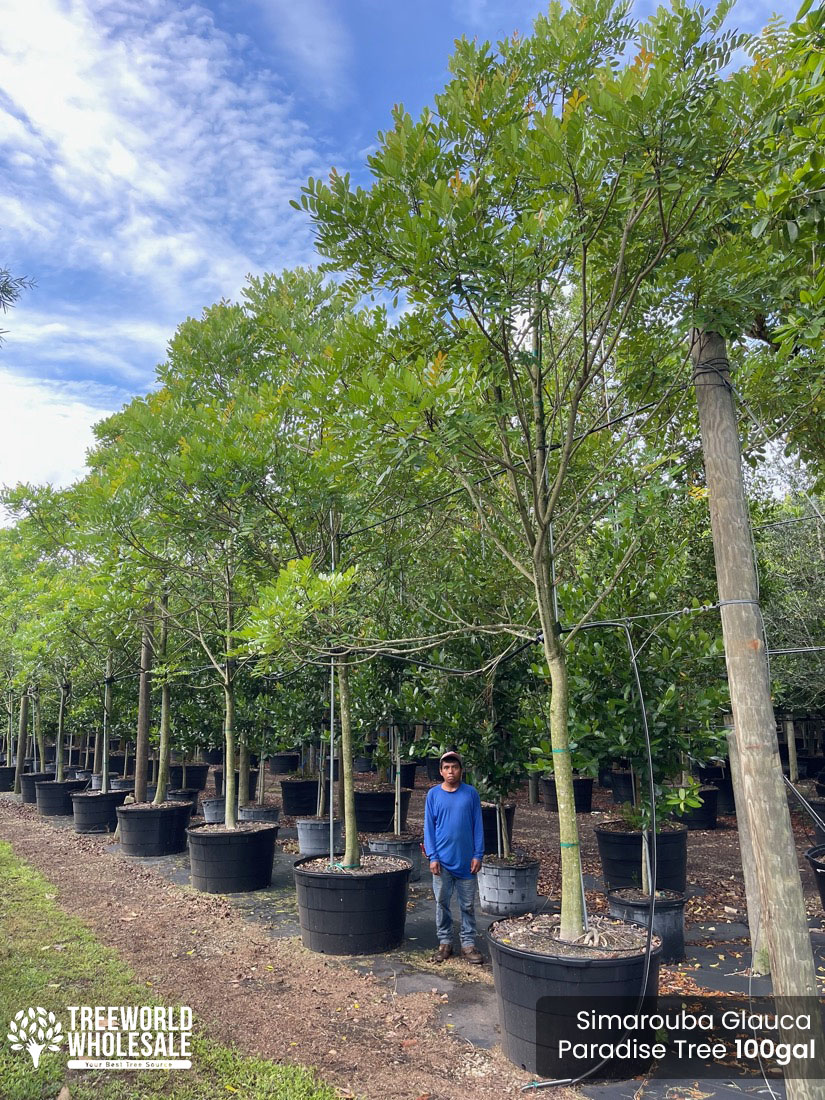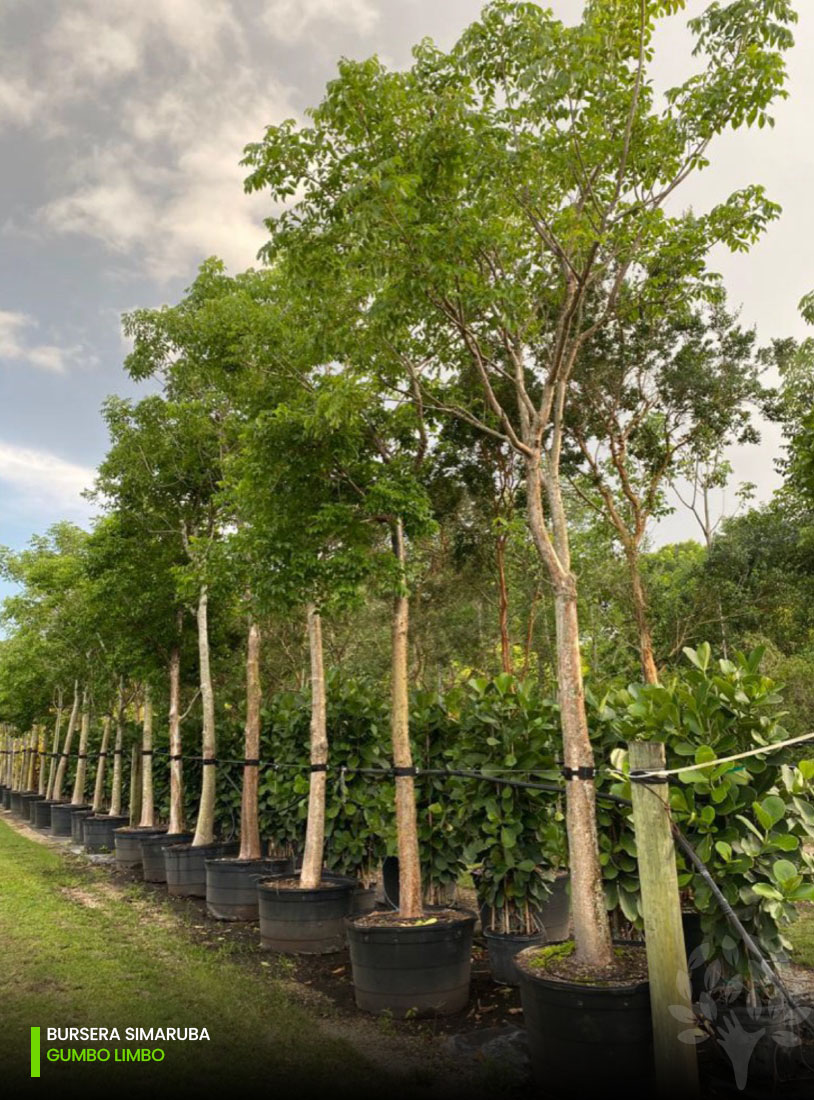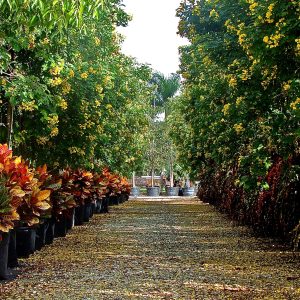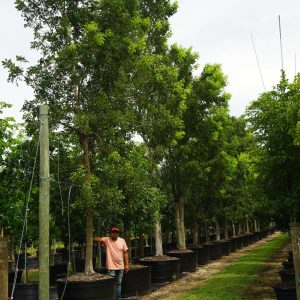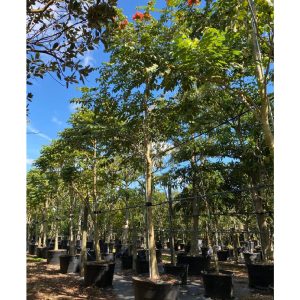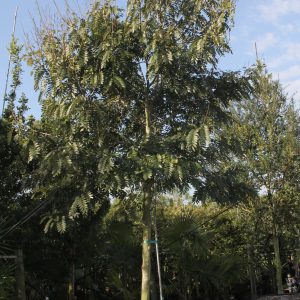Description
Gumbo Limbo — Florida Native Tree
Native to Florida, South Florida, the Caribbean, Central America, and South America, the Bursera Simaruba tree is renowned for its resilience, rapid growth rate, and distinctive appearance. Commonly known as the gumbo limbo tree due to its unique, peeling bark. The term “gumbo limbo” is believed to be derived from a combination of African and Native American languages, although the gumbo limbo in Florida is also fondly referred to as the “tourist tree” with the reddish, peeling bark resembling the sunburned skin of tourists.
Bursera Simaruba Tree Description
The gumbo limbo tree is a medium-to-tall tropical tree with a thick trunk and large irregular branches starting close to the ground and forming an open, round crown. Its leaves are compound, with 7–13 leaflets arranged in a spiral, up to 12 inches long, and bright or dark green in color. Furthermore, the flowers of the Bursera simaruba tree are relatively small and inconspicuous. They typically appear as small, greenish-white clusters and may not attract as much attention as the flowers of some other ornamental trees. But they do play a crucial ecological role as an important source of nectar and pollen for a variety of local wildlife, including bees and butterflies. Fruits are oval, red, and about 1/2 inch long, containing a single seed; the tree propagates easily from cuttings or seeds.
Additionally, gumbo limbo is a wind-resistant tree, well-suited to South Florida’s tropical climate. It thrives in warm, humid conditions and is tolerant of various soil types, including sandy and limestone soils, which are prevalent in the region. The Bursera simaruba in Florida is also quite popular due to its outstanding resilience to harsh conditions, including strong winds and salt spray, making it an excellent choice for coastal and hurricane-prone areas. Its ability to quickly recover from damage is a significant advantage in South Florida’s weather conditions. Plus, no pests or diseases of major concern.
The Red-Trunk Belize Variety of Gumbo Limbo Tree
As previously mentioned, one of the most attractive features of the Bursera simaruba is its trunk, often admired for its reddish or coppery aromatic bark which peels off in papery flakes exposing a smooth gray inner bark. This characteristic gives the tree a unique appearance, making it a visually striking addition to landscapes.
In South Florida, and at our TreeWorld Wholesale nursery, you can find two varieties of the gumbo limbo tree for sale. The red-trunk Belize gumbo-limbo tree often has a more slender trunk with a deeper reddish hue, elongated and less robust than the standard gumbo limbo tree, which is typically thicker. While both are adapted to tropical climates, the “red-trunk Belize” variety may possess specific adaptations suited to the environments of Belize and nearby regions.
Best Landscape Applications for the Gumbo Limbo
Lastly, with its broad, spreading canopy, the gumbo limbo tree provides excellent shade. It’s ideal for creating cool, shaded areas in gardens, parks, and public spaces, making it a popular choice for South Florida’s sunny and warm climate.
Bursera Simaruba Tree for Sale at TreeWorld Wholesale
At our tree farm nursery, we have gumbo limbo trees for sale, both the traditional Bursera Simaruba variety and the red-trunk Belize tree, available in sizes from 25 to 300 gallons, including exclusive 600-gallon size trees. For further Bursera Simaruba tree specifications, please check our chart.
If you need further product information or want to contact us regarding our portfolio, you can email us at [email protected], schedule a visit at our headquarters at 24605 SW 192 Ave., Homestead, FL 33031, or call us at 305-245-6886.
🌳More popular and beautiful plants: Simarouba glauca

